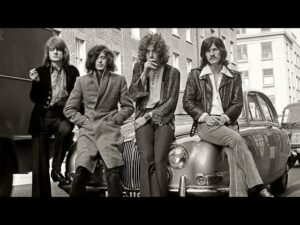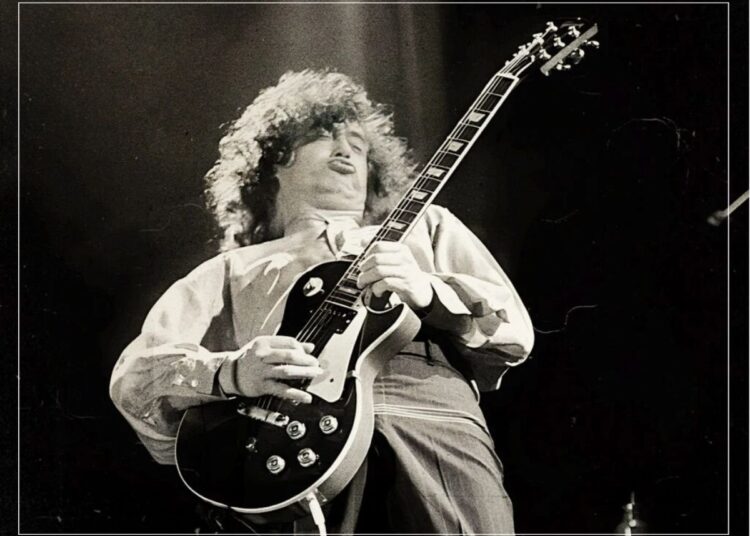““Don’t blame me—listen closely and you’ll hear it.”
That was Jimmy Page’s wry warning to an interviewer who’d just asked whether there were any Led Zeppelin performances he wished he could retouch. Page’s answer surprised even die-hard fans: he singled out the brooding blues epic “Since I’ve Been Loving You” from Led Zeppelin III—a track revered for its live-in-the-studio feel—and admitted that it contains what he called a “glaring mistake.” The kicker? He insisted the error should stay exactly where it is, a living reminder that Zeppelin’s magic was never about laboratory perfection.
—
The context: tape rolling, lights low
In May 1970 the band decamped to Island Studios’ Studio B in London to capture the slow-burn blues cut almost completely live. Page chose his beloved 1959 Gibson Les Paul and cranked a Leslie speaker cabinet to achieve that sighing vibrato. John Bonham was wedged into the same booth so the guitar could “bleed” into the drum mics, giving the room a swampy glue. According to engineer Andy Johns, Zeppelin nailed the basic track on the second complete take; Plant’s vocal, Jones’s foot-pumped Hammond, and Page’s molten solo all poured out in real time.

That immediacy is precisely why the “mistake” survived. The band had promised Atlantic Records an album within six months of finishing their hard-touring 1969 schedule, so every minute of tape cost money they didn’t have to spare. Johns recalled Page listening back, grinning at the hair-raising atmosphere, then muttering, “If anyone notices, they can sue me.”
—
Pinpointing the “glaring” moment
So where is it? Page never gives timestamps, but most guitar analysts land on the descending lick at 3:59 of the studio version. Coming out of a precipitation-of-notes run in C minor, Page’s fretting hand lands half-a-step flat on the turnaround. He instantly slides to the correct pitch, so the sour note lasts barely a tenth of a second—but in headphones it’s unmistakable. Page later joked, “I was aiming for Memphis, ended up in Macon, and got back on the train before anyone could throw stones.”
Others argue the real slip lies in Bonham’s famous squeaky Ludwig Speed King pedal, audible throughout the entire track. Page shrugged that controversy off in the same conversation: “That’s John’s pedal, not my Les Paul. Don’t blame me.” Either way, the guitarist’s larger point stands: Zeppelin recorded like a jazz quartet, and blemishes proved the tape wasn’t spliced into sterility.
—
Why Page refused to “fix it in the mix”
1. Authenticity over accuracy.
Page viewed Led Zeppelin as closer to Howlin’ Wolf than to Sgt. Pepper-era Beatles. A cracked vocal, a buzzing fret—signs of living musicians sweating in a room—trumped pristine overdubs every time.

2. Momentum is fragile.
Re-punching a single bar would have risked dulling the volcanic build-and-release that makes “Since I’ve Been Loving You” feel like it might collapse under its own emotional weight.
3. Learning from the blues masters.
Page grew up spinning Chess singles where Willie Dixon’s upright rattles or Hubert Sumlin’s bends scrape against the fret. Imperfection, he likes to say, is “the fingerprint of the blues.”
—
Echoes throughout Zeppelin’s catalogue
Once you know Page’s philosophy, other “happy accidents” jump out:
“Black Dog” – Bonham counts the band back in a fraction late after the a-capella vocal line, giving the downbeat an extra gulp of tension.
“The Ocean” – A faint telephone rings at 1:37; Page kept it because “it sounded like the crowd we pictured at the shoreline.”
“Good Times Bad Times” – Tape saturation causes Jones’s bass to bloom unevenly on the low-E pedal notes, yet the wobble thrills rather than distracts.
In every case, Page vetoed studio fixes, insisting the anomalies injected “human swing” that click-tracks can’t fake.
—
What modern producers can take away
1. Commit early. Digital multitracking tempts artists to hoard endless alternate solos. Page picked one, warts and all, and moved on.
2. Mic leakage can be a friend. Sharing air lets instruments talk to each other, creating overtones impossible to manufacture with isolated re-amping.
3. Tell a performance story. The tiny stumble at 3:59 functions like narrative foreshadowing; the solo teeters, then soars. Remove it and the arc flattens.
—
The legacy of a “flaw”
Half a century later, “Since I’ve Been Loving You” remains a rite-of-passage cover for aspiring blues-rock guitarists. Many labor to eliminate the micro-flat note; few replicate the emotional danger that birthed it. Jimmy Page’s verdict still rings: “If music is supposed to be alive, let it breathe—even if it coughs.”













